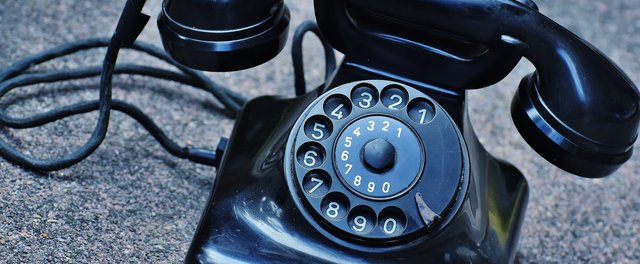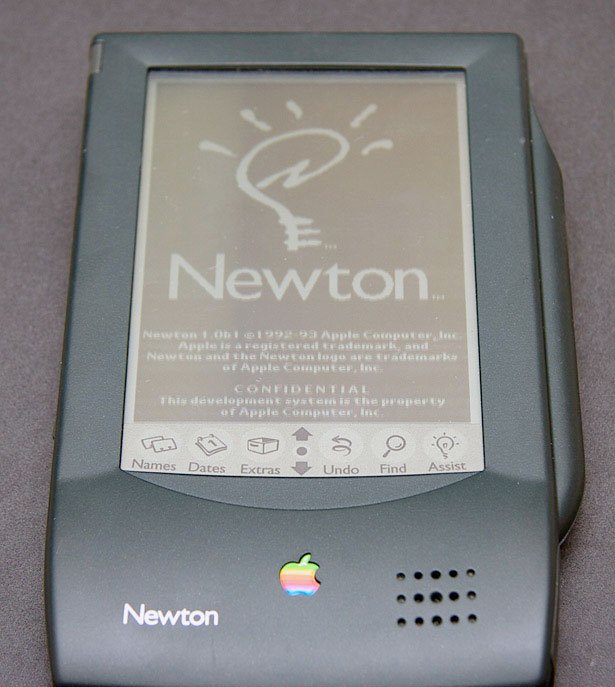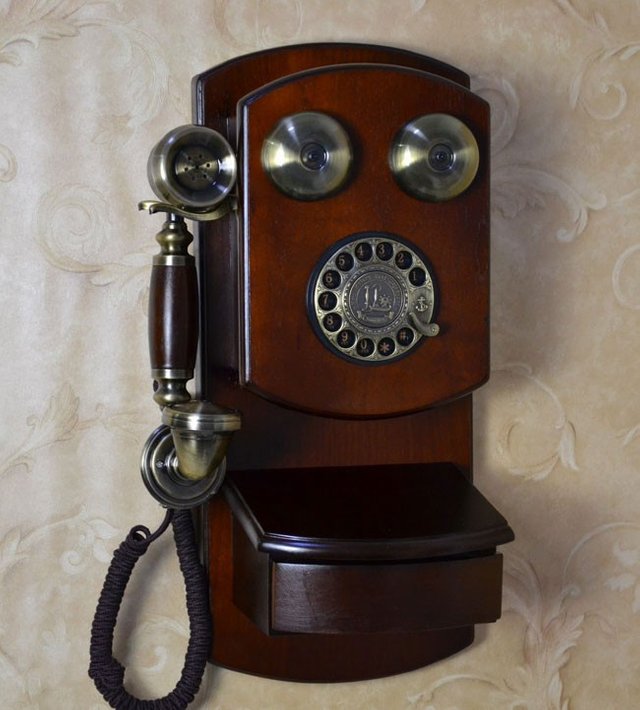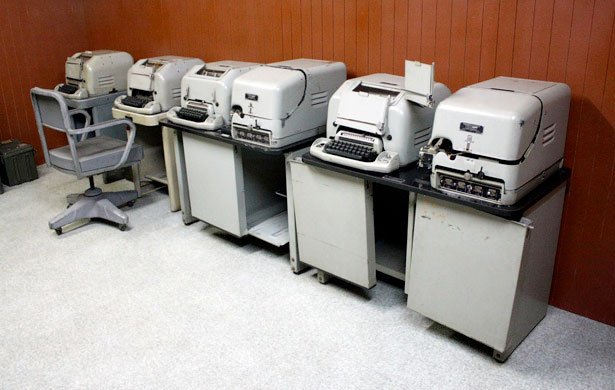Tech Report - Memory Lane and Forgotten Devices of the Past (Part 4)

Technology has advanced many times over and devices of the past often times have no place in the awareness of younger generations. It is my goal in this series to enlighten some and take others back to their youth with a bit of commentary on old gadgets!
Thinking about all the cool devices I've had, used, thrown away and lost, it really seems amazing to me how far we have come in terms of technology in just my lifetime alone.
Did you ever own a gameboy? What about a discman? How about a walkman? Did you have a big brick cellphone? What about a motorola flip phone?
This is what I'm talking about! The memories, the joys and the excitement of it all?
Where are all those gadgets now? I hope most have been recycled if they've been chucked away... They most likely are all sitting in some landfill somewhere. Depressing right?
Well, the show must go on!
Who knows what the future holds and what we may invent going forward? Will we create a depicted in all those zombie apocolypse movies? Or a perfect world (with dystopian edges) as depicted in the movie Gattaca? Only time will tell... But enough of the rant eh?
Let me unveil a few more magnificent gadgets of the past!


Image Source: WebDesignerDepot

Few people remember the age of the PDA and in all honesty, they are pretty much considered one of the biggest tech flops of all time...
The most famous PDA ever invented was probably the Apple Newton. It was sold at a huge price point compared to other Personal Digital Assistants (PDA) that were on the market.
Personal digital assistants were basically electronic timekeepers when a computer couldn't be fit in your pocket. The Newton’s development laid the groundwork for Apple’s hugely successful iPod and iPhone.
The Newton is a series of personal digital assistants (PDA) developed and marketed by Apple Computer, Inc. An early device in the PDA category – the Newton originated the term "personal digital assistant" – it was the first to feature handwriting recognition. Apple started developing the platform in 1987 and shipped the first devices in 1993. Production officially ended on February 27, 1998. Newton devices run on a proprietary operating system, Newton OS; examples include Apple's MessagePad series and the eMate 300, and other companies also released devices running on Newton OS. Most Newton devices were based on the ARM 610 RISC processor and all featured handwriting-based input.
It didn't take long for a competitor to hit the market. Pilot was the name of the first generation of personal digital assistants manufactured by Palm Computing in 1996 (by then a division of U.S. Robotics). The inventors of the Pilot were Jeff Hawkins, Donna Dubinsky, and Ed Colligan, who founded Palm Computing in 1992.The PalmPilot organizer went head to head with the Apple Newton creating a robust market of choices for PDAs.
I remember my mother had a PDA that she just loved. Thinking back I remember she used it for notes, its schedule feature and I think it even had games if I'm not mistaken... It was pretty cool at the time and it made her the envy of the office!
The fact of the matter is that these devices paved the way in a sense for the smartphones we have today.



It is funny that for being such an epic invention, nobody knows to this day who it was that actually invented the phone. It seems to remain a highly debated topic to this day.
One thing is not disputed and that is the fact that the first patent was awarded to Alexander Graham Bell in 1876. The telephone has come a long way and has evolved from rotary dial models to smart phones that we can use today to surf the internet!
In 1876, Scottish emigrant Alexander Graham Bell was the first to be granted a United States patent for a device that produced clearly intelligible replication of the human voice. This instrument was further developed by many others. The telephone was the first device in history that enabled people to talk directly with each other across large distances. Telephones rapidly became indispensable to businesses, government and households and are today some of the most widely used small appliances.
The essential elements of a telephone are a microphone (transmitter) to speak into and an earphone (receiver) which reproduces the voice in a distant location.[1] In addition, most telephones contain a ringer, which produces a sound to announce an incoming telephone call, and a dial or keypad used to enter a telephone number when initiating a call to another telephone.
Until approximately the 1970s, most telephones used a rotary dial, which was superseded by the modern dual-tone multi-frequency (DTMF) push-button dial, first introduced to the public by AT&T in 1963.
To think that something so basic has evolved into the Apple and Samsung smartphones we carry around in our pockets today!


In all honesty, until I did a bit of research around this I had no clue what a Telex Machine was! Have you ever seen or used one of these fascinating technological relics? I thought not...
So what was it all about? What was it used for? Why don't we need them in this day and age? What has replaced them?
I'll do my best to answer these questions one at a time below...
According to my source, these machines used radio and/or microwaves to transmit information over the airwaves. Variations of them are still in use today for communications by the hearing impaired.
The telex network was a public switched network of teleprinters similar to a telephone network, for the purposes of sending text-based messages. Telex was a major method of sending written messages electronically between businesses in the post World War II period. Its usage went into decline as the fax machine grew in popularity in the 1980s.
The roots of the Telex movement began in Germany as a research and development program in 1926. It quickly became an operational teleprinter service in 1933. The service, operated by the Reichspost (Reich postal service)[1] had a speed of 50 baud — approximately 66 words per minute! This also seems to be the beginning of a system to measure the speed of early stage modems!
Telex service spread within Europe and (particularly after 1945) around the world.[2] By 1978, West Germany, including West Berlin, had 123,298 telex connections. Long before automatic telephony became available, most countries, even in central Africa and Asia, had at least a few high-frequency (shortwave) telex links. Often, government postal and telegraph services (PTTs) initiated these radio links. The most common radio standard, CCITT R.44 had error-corrected retransmitting time-division multiplexing of radio channels. Most impoverished PTTs operated their telex-on-radio (TOR) channels non-stop, to get the maximum value from them.
Essentially the modern fax machine seems to have been born from this fascinating technology! To this day I still find myself needing to send faxes from time to time! Thanks to Telex this has been made possible.
There's no debating the fact that over the past few decades technology has improved by leaps and bounds! We have major power in these small devices these days beyond the greatest supercomputers available in the past.
So just to quickly recap, the PDA, the rotary phone and telex machines have all played a significant role in the technological development of our species. Without these devices, where would we be? I have no clue...
Thanks for reading.
Authored by: @techblogger
In-text citations sources:
Telex - Wikipedia
Rotary Phone - Wikipedia
PDA - Wikipedia
Image Sources:
Wikipedia
Pexels

To listen to the audio version of this article click on the play image.

Brought to you by @tts. If you find it useful please consider upvoting this reply.
How could I forget my PDA.. or, why would I remember?
Ramble alert.
I really loved my PDA, or the potential I saw in it anyway. THIS I thought, will be the launch pad of my newfound time management capability.
"I'll be productive, savvy and... Well I can be Somebody" (someone more organized and "on the ball").
I carried that attention trap around with me at work, thinking I'd swiftly rotate a cascade of lists, ideas, assessments etc. and then I could summon the right thing at the right time.. never miss a beat.
But I missed every moment that I had my eyes placed on the lifeless pale green screen which teased my OCD pseudo perfectionism and obstructed my flow relentlessly.
The cure arrived: a company paid seminar by Franklin Covey (remember them?). That's where I bonded with a beast of a binder- The FC daily planner.
But it worked. As long as I "can" -color outside of the lines provided, then I'm happy and productive. ABC 123. Nothing past C2 will ever be done and life is good.
I've been striving to minimize tech induced disability, mindful that more capacity is space to store what I might be losing hold of, or the option to not have it in the first place.
Less is more when less is appreciated and a human mind is free to move around; to improvise in the moment.
Congratulations @techblogger! You have completed the following achievement on the Steem blockchain and have been rewarded with new badge(s) :
Click on the badge to view your Board of Honor.
If you no longer want to receive notifications, reply to this comment with the word
STOPDo not miss the last post from @steemitboard: